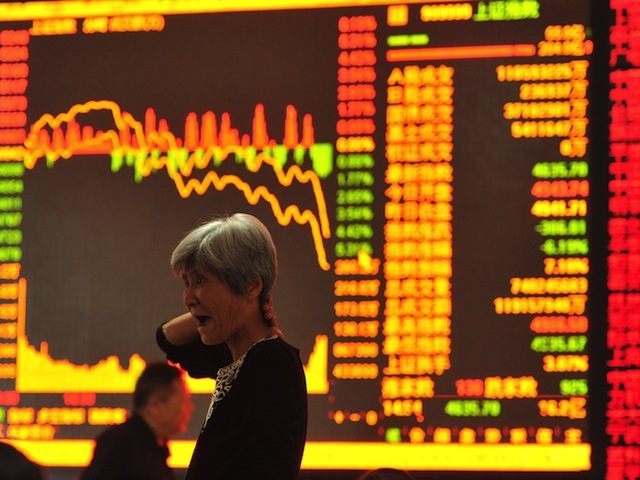China’s leading Shanghai Index officially entered a “Bear Market” this week, with stocks, plunging over 20 percent since their mid-June high.
The latest “Bull Market” spike, from 2000 in July 2014 to a high of nearly 5200 recently, was similar to the 18-month run from 1000 in May 2005 to nearly 5900 in October 2007. But after the earlier speculative bubble popped, a bear market over the next year caused stock prices to fall over 70 percent.
Leigh Skene of Lombard Street Research commented that the current stock market bubble could be on even shakier ground than the 2005 episode, since economic growth has been falling, corporate operating profitability is being fudged, and EPFR Global estimates that the weekly capital flows out of Emerging Markets are the largest since the Lehman Brothers bankruptcy and the Great Financial Crisis.
Skene states that the Peoples Bank of China (PBOC) has been “trying to redirect liquidity from speculation to the economy by raising interest rates on margin debt and lowering them elsewhere.”
But the stock market bubble took off in December, when the China Securities Deposit and Clearing Corporation terminated leveraging of high yield bonds to maximize interest by restricting margin lending to prime AA or higher-rated bonds. Investors saw the government action as encouraging investors to dump junk bonds and pile into stocks.
The recent market surge had been driven by new issues, such as the $2.16 billion listing of China National Nuclear Power Corporation on May 26, the country’s largest for nearly five years, convincing investors the government was backing stock speculation.
Borrowing on margin drove the China bull market higher before peaking at 8 percent of Gross Domestic Product this month, compared to 2.5 percent in the U.S. With some Chinese companies shutting down operations to focus on more profitable speculative stock trading, the Wall Street Journal reported that 97% of reported growth in manufacturing profits this year came from stock trading.
Skene comments that Shanghai stocks are trading at huge premiums of “one-third for big blue chips to 10 times for small cap stocks,” compared to neighboring Hong Kong. China stocks trade at 100 times earnings in mainland markets versus 10 times in Hong Kong. The inflated the value of the Chinese markets is twice the size of Japan’s market.
Lombard estimates China’s gross total debt to GDP ratio is about 300 percent and expanding rapidly. That compares to America’s 332 percent debt-to-GDP ratio, which has fallen by 10 percent since 2009. But “China’s financial infrastructure and markets are considerably less advanced than America’s while American banks are far better capitalized and more capable of adjusting to adverse conditions.”
China’s debt binge had been sustainable for the last decade and a half, because its global exports were growing about twice as fast as GDP. But although official Chinese government figures show growth of 7 percent in the first quarter of 2015, Lombard Street’s analysis demonstrates that the Chinese economy actually suffered its first quarter of negative output growth since 2009.
China’s trade growth only averaged 2.4 percent over the last three years, versus GDP growth of 3.4 percent. Skene comments that the Baltic Dry Index for container ship rentals “hovering near all-time lows and the Shanghai Containerized Freight Index plunging far below the February level confirm the bearish outlook for trade.”
China’s foreign currency reserves have also reportedly fallen by 10 percent since July of 2014. Skene believes China will probably have to spend most of that accumulated trade wealth to recapitalize its banks’ bad debt.
In mid-2013, when it seemed that everyone was talking about the perpetual Chinese Economic Miracle, I warned that “China is About to Suffer the Mother of all Banking Crisis.” Although the nation was reporting spectacular economic growth at the time, their “secret sauce,” according to Lombard Street, was based on a rapid build-up of debt.
Leigh Skene believes the 20 percent drop in Chinese stock prices probably indicates that a market peak has occurred. He warns that falling economic productivity and capital flight suggests this stock market crash could be as spectacular as the one in 2008.

COMMENTS
Please let us know if you're having issues with commenting.